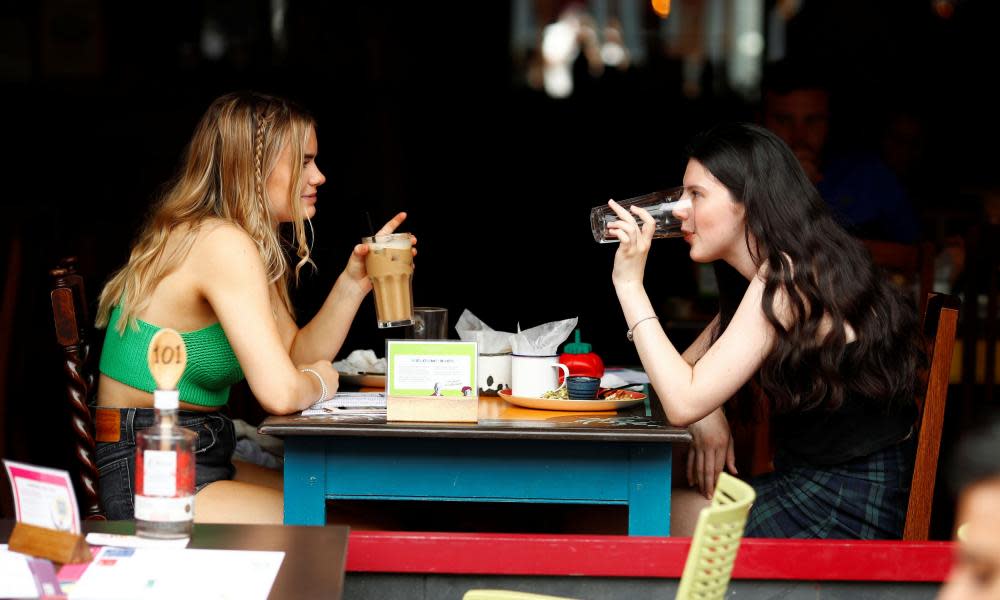Eat out to help out used 10.5m times in scheme's first week

Diners across the UK used the government’s eat out to help out scheme more than 10.5m times in its first week, the Treasury said.
The scheme offers diners a 50% discount, up to £10 per person, at participating venues between Monday and Wednesday, typically the quietest days of the week. It runs until the end of August, and applies to meals and soft drinks consumed at a cafe, pub or restaurant.
HMRC said it had received claims for 10,540,394 “covers”, or individual meals, from businesses under the scheme as of 9 August. A couple out having dinner together under the scheme would count as two covers.
The average claim was close to £5, which means the scheme cost around £50m in its first week. The Treasury has set aside £500m to fund the initiative.
Rishi Sunak launched eat out out help out to help the struggling hospitality industry, and described the uptake as “amazing”.
“Britons are eating out to help out in big numbers. And they aren’t just getting a great deal – they’re supporting the almost 2 million people employed in this sector,” the chancellor said.
“These amazing figures show that our plan for jobs is delivering.”
HMRC said 83,068 restaurants had signed up to the scheme. They range from independent cafes, pubs and restaurants to mainstream chains such as McDonald’s, KFC, Wagamama and Toby Carvery, and include Michelin-starred restaurants.
The Treasury hopes the scheme will ultimately support 129,000 businesses. Some 80% of hospitality firms stopped trading in April following the coronavirus lockdown and 1.4 million workers in the sector have been furloughed – the highest proportion of any sector.
Evidence from 2008 suggests that the hospitality sector could be a key contributor to the jobs recovery post-Covid-19, HMRC said. It generated 22% of new jobs for unemployed people in 2010 and 2011, according to the Resolution Foundation, despite accounting for just 10% of overall employment.
The half-price meal offer appears to have benefited retailers, which have also been hit hard by the pandemic. The number of people visiting high streets and shopping malls surged last week, especially during the evenings, according to the retail analysts Springboard.
Between Monday and Wednesday, footfall rose 18.9% after 6pm across the UK’s high streets, shopping centres and retail parks. Lunchtime visits were up 9.6%. However, compared with this time last year, visits are still down by more than a third.

 Yahoo News
Yahoo News 
